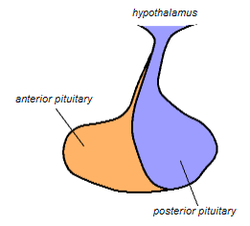A number of pioneering discoveries made by Jagdish Chandra Bose of India,
more than 100 years ago,
leave us to visualize about the broader concept of life;
encompassing animals, plants as well as non living material too,
encompassing animals, plants as well as non living material too,
proving with his own designed instruments that:
1. Elecrical nature of conduction of stimuli in animals are same as to the plants and they can "feel pain, understand affection etc."
2. Cells as well as metals both show fatigue response to the stimulation.
Perhaps this was the first time in history of biophysics,
that a comparative study of living and non living world has been performed
and demonstrated so successfully.
 |
| Jagadish Chandra Bose in Royal Institution, London |
Many of his instruments are still on display and remain largely usable now, over 100 years later. They include various antennas, polarisers, and waveguides, which remain in use in modern forms today.
Electro-physiology of animals and plants: His major contribution in the field of biophysics was the demonstration of the electrical nature of the conduction of various stimuli (e.g., wounds, chemical agents) in plants, which were earlier thought to be of a chemical nature.
From the analysis of the variation of the cell membrane potential of plants under different circumstances, he hypothesised that plants can "feel pain, understand affection etc."
The central hall of the Royal Society in London was jam-packed with famous scientists
on May 10, 1901. Everyone seemed to be curious to know how Bose’s
experiment will demonstrate that plants have feelings like other living
beings and humans. Bose chose a plant whose mots were cautiously dipped
up to its stem in a vessel holding the bromide solution. The salts of
hydrobromic acid are considered a poison. He plugged in the instrument
with the plant and viewed the lighted spot on a screen showing the
movements of the plant, as its pulse beat, and the spot began to and fro
movement similar to a pendulum. Within minutes, the spot vibrated in a
violent manner and finally came to an abrupt stop. The whole thing was
almost like a poisoned rat fighting against death. The plant had died
due to the exposure to the poisonous bromide solution.
Metal fatigue and cell response: Bose performed a comparative study of the fatigue response of various metals and organic tissue in plants. He subjected metals to a combination of mechanical, thermal, chemical, and electrical stimuli and noted the similarities between metals and cells. Bose's experiments demonstrated a cyclical fatigue response in both stimulated cells and metals, as well as a distinctive cyclical fatigue and recovery response across multiple types of stimuli in both living cells and metals.
Bose documented a characteristic electrical response curve of plant
cells to electrical stimulus, as well as the decrease and eventual
absence of this response in plants treated with anaesthetics or poison.
The response was also absent in zinc treated with oxalic acid.
He noted a similarity in reduction of elasticity between cooled metal
wires and organic cells, as well as an impact on the recovery cycle
period of the metal.
# share courtesy:http://en.wikipedia.org
# books:
Response in the Living and Non-living, 1902
Comparative Electro-physiology, 1907
Researches on Irritability of Plants, 1913
The Nervous Mechanisms of Plants, 1926
# more references:










